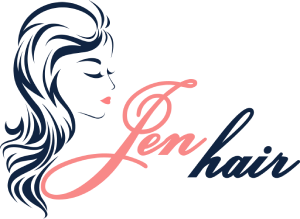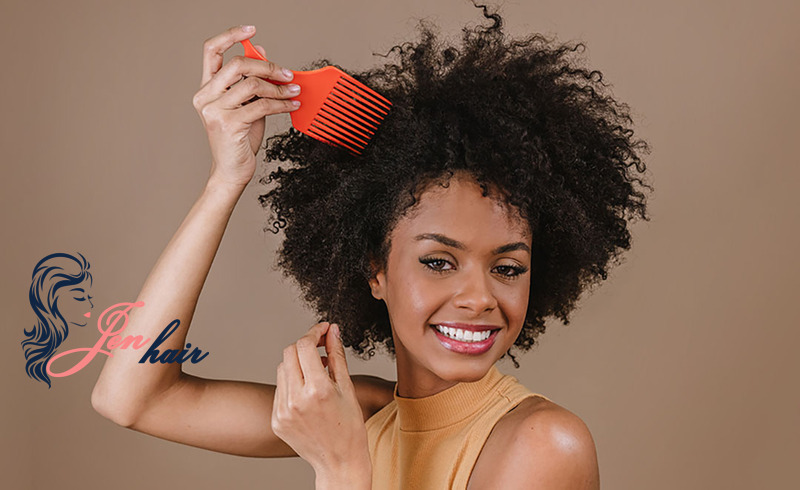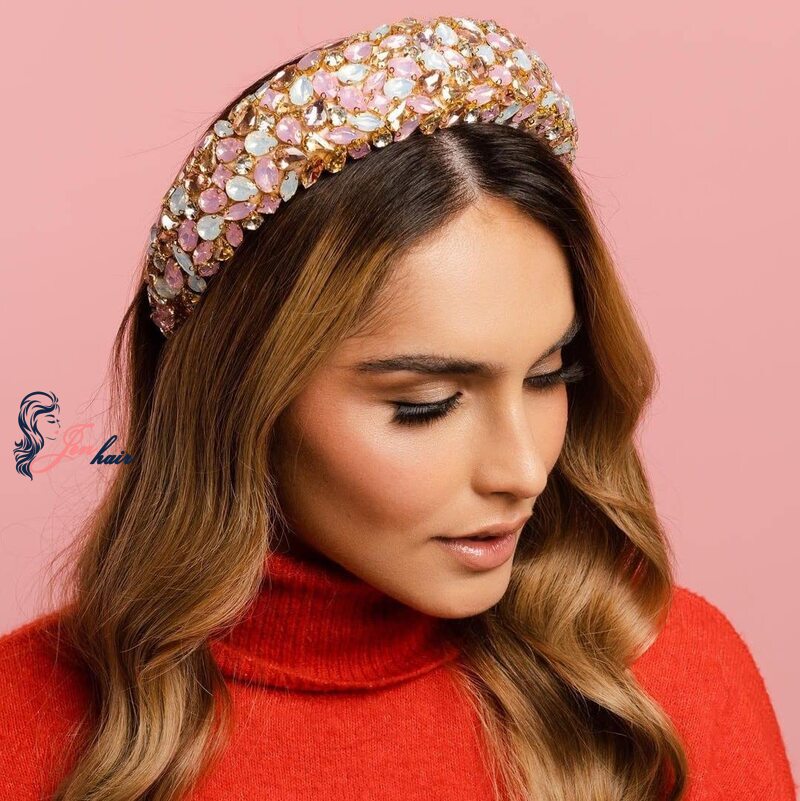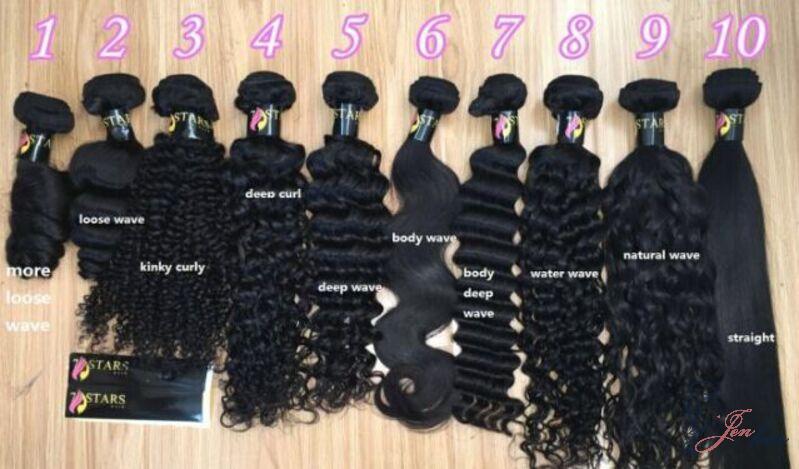No products in the cart.
Hair Care Guide
The 6 different types of hair extensions you may not know
The hair extension industry has opened up for women a quick and effective beauty solution. People can change and create more hairstyles thanks to hair extensions or no longer have to worry about our hair being cut.
However, do you know anything about the different types of hair extensions? Have you felt annoyed when seeking a suitable type for your style?
If those are your problems, this article is for you to save a lot of time. We will help you to discover various types of hair extensions based on different factors.
Let’s shed light on them right now!
Types of hair extensions based on origin
Based on origin, hair extension techniques are divided into two main types namely human hair and synthetic hair.
Human hair extensions
Human hair extensions made from natural hair are popular thanks to a lot of significant benefits. They have easy styling and the ability to change according to your wishes flexibly. Moreover, they also bring a natural feeling for users and have a durable life.
However, hair extensions made of natural hair are expensive including purchasing and maintenance. Because they are taken from human hair, they are more expensive than synthetic hair extensions. Like real hair, they also need washing, messaging, and styling on a regular basis.
In addition, this type of hair will be difficult to style with chemicals because the nature of the customer’s natural hair and other people’s hair is different. They are more sensitive than the synthetic hair extensions when coloring, styling, and even in hot water.

Synthetic hair extensions
Hair extensions made from synthetic fibers are cheaper but still feel 99% like natural hair. The fibers go through a number of chemical procedures to give them a look, feel, color, and style ability that are comparable to those of real hair.
Wigs made of synthetic materials are simple to maintain. All you need to do when restyling is wash, dry, and then maintain them. Moreover, you can easily try different color styles without going to a hairstylist by purchasing multiple synthetic wigs.
However, with hair extensions made from synthetic fibers, straightening the hair won’t be easy; high-temperature curling can melt it. Wigs made of synthetic hair have a shorter useful life than wigs made of human hair. If used every day, typically 4-6 months.

Those are some significant features of two main types of hair extensions based on their origin. If you still have no idea about the difference between human hair extensions and synthetic hair extensions, visit Jen Hair’s blog for more details.
Types of hair extensions based on method
Hair extensions are also divided into 6 main types based on method including fusions, I-tips or microbeads, tape-ins, wefts, clip-ins, and halo extensions.
Bulk
Bulk hair is hair tied with an elastic band. Bulk hair can be used to make a variety of hair extensions, including tape-in, tip-in, clip-in, ponytails, and more because it is a material. This type of hair extensions is so popular that they are the best selling products in the market.
In response to customer requests, bulk hair can be styled into curly bulk hair, wavy bulk hair, bleached, colored in certain hues, or simply supplied in its original condition.
Bulk hair is divided into 2 main types:
- Single-drawn bulk hair: They are cut from a single donor and then sewn into a weft. The length of each strand varies very little. Single-drawn bulk hair is the most popular sort because it is inexpensive and requires less processing effort.
- Double-drawn hair extensions are processed by hand carefully so the full bundle will be maintained its fullness from top to bottom, then be sewn in a weft. Double-drawn hair extensions cost more, but they have greater quality and volume and will last longer. This procedure improves the quality of hair extensions and will give you a fuller appearance.

Fusions
Hot fusion and cold fusion extensions are two of the most well-known forms of fusion hair extensions.
By using silicone-coated keratin U-tip bonds, the new hair bundles are thermally fused to your original hair using the hot fusion technique. Your natural hair is shielded by the silicone lining. There is no glue or tape used because hot fusion employs keratin to secure the hair strands to the client’s hair. As a result, they provide a naturally blended appearance and enable significantly greater styling flexibility.

In terms of cold fusions, small sections of hair are held together via brass cylinders pulled through a lock. As a gentler alternative to hot fusion hair extensions, cold hair fusion extensions were developed. No heat is used when applying cold fusion hair extensions to your natural hair.
I-tips
I-tip hair extensions or microbeads use pliers and tiny beads to secure the extensions. These beads are typically matched to the color of your natural hair. It takes between two and four hours to finish the look and neither heat nor glue is used. You should be delicate when styling, brushing and washing your hair to keep them in good condition during that time.
I-tip hair extensions are considered a high-maintenance extension method. Beaded extensions must be removed and reapplied every 6 to 10 weeks to prevent excessive matting from regrowth; any longer than 12 weeks puts your natural hair in considerable danger of damage.

Tape-ins
Tape-in extensions is an perfect choice for styling. One to one and a half inch hair extensions called tape-ins are pre-taped to your hair using medical-grade glue. The quickest and simplest way to attach and remove hair extensions after clip-ins is with tapes. Most hair types can benefit from tape-ins, and when used properly, they are considered to cause the least long-term damage to your natural hair.

Unlike clip-in hair extensions, you have to have a professional stylist to apply this method. With tape-in hair extensions, you can easily complete the application process within 40 minutes. However, to lengthen your hair extensions’ longevity, you should wash and style them carefully
Clip-ins
Clip-in hair extensions are made out of a strand of curved pieces that are joined at the base with either silicone or fabric. The only thing you need to do is clip the pieces to your own natural hair.
The least permanent type of extension is clip-ins because you can easily take them off and put them back on whenever you like. In contrast to some of the other hair extension methods discussed above, clip-ins typically need 5 to 15 minutes of home application time.
Because they don’t use any of the aforementioned chemicals, heat, pressure, or other techniques, clip-in hair extensions are also the least damaging because there is no harm done to your original hair. Its popularity as one of the most common hair extension kinds can be attributed to a number of factors.

Halo extensions
Halo extensions are ideal for people who are extremely low-maintenance despite being invisible and style-friendly. They are practical because the single-weft row that hair strands attached to an incredibly thin cloth strip is held in place by a hardly perceptible thread that follows the form of the head. Halo extensions are suitable for those with a thin to medium hair type and hair length longer than shoulder length.
Halo hair extensions can last three to five years. It may take you two to three hours to apply if the extensions are being fitted to the entire head. They’re easy to apply for daily wear in a matter of minutes and are great for first-time users. Instead of clipping or sewing in wefts, Halo hair extensions make users feel comfortable with the installation
Unsurprisingly, they are a perfect alternative for people who are interested in extensions but not yet ready to commit to a more permanent application,

FAQs
1. What is the best type of hair extensions?
There are a lot of types of hair extensions that each one has its own strength. Depending on your own demands, you can seek the best kinds of hair extensions that are best for you. For example, clip-ins are the fastest and most affordable types so that you can choose them if you want something convenient and quick. Or if you want something least invasive to your hair roots, you can choose Halo extensions.
2. What type of extensions looks the most natural?
The most realistic-looking hair extensions are sewn-in extensions that are sewn straight into your scalp. However, types of extensions with this method are also the most expensive because it requires a hair extension professional to apply them. To make them last longer and maintain their appearance, you will need regular maintenance such as washing and styling.

3. What is the healthiest type of hair extension?
The least harmful hair extensions are now clip-ins. With this temporary hair extension technique, tiny clips are used to secure the expanded strands of the hair. Your natural hair won’t be affected in any way because the clips are taken out as soon as you get home. The sole drawback of clip-ins is that they cannot be worn continuously and are just temporary. You can choose to use fusions or wefts for the long term.
4. What type of hair extensions last the longest?
The most user-friendly, least harmful, and non-permanent type of hair extensions available are clip-ins. They come in strands that are fastened to clips that you may attach to your real roots. These extensions could last more than a year with careful care. After 30 times of wearing, we advise washing them.

If you want to know more about other hair extensions’ longevity, you can check this post for more details. Here you can acquire more knowledge about how long hair extensions last.
5. Which type of hair extensions should I use?
Each type of hair extension has its own benefits. It depends on your demands when using them. However, which type of hair extensions should be used is the question of all girls around the world. If your hair is vulnerable, you should choose the least damaging hair extensions such as clip-ins, tape-ins and so on. They are considered to be easy to remove and affordable to have regular maintenance.

If you are interested in this topic, kindly check this post on the safest hair extensions for your hair.
Final thoughts
Hair extensions are excellent shortcuts to a completely new appearance. Parallel with its various benefits, the volume of knowledge related to different types of hair extensions as well as the best type of hair extensions can make people overwhelmed. We have provided you with the answer in this article. We sincerely hope that you have successfully chosen a suitable type for yourself.
If you like our content or have any questions about those, please contact us here.

 Guide Cornrows With Side Part The Best For Beginner
Guide Cornrows With Side Part The Best For Beginner Ultimate Guide: Headband with Hair Attached (Best Styles for 2025)
Ultimate Guide: Headband with Hair Attached (Best Styles for 2025) Human Hair Clip In Extensions For Black Hair For Thin Hair
Human Hair Clip In Extensions For Black Hair For Thin Hair
